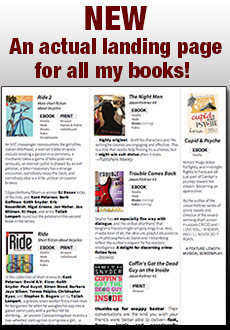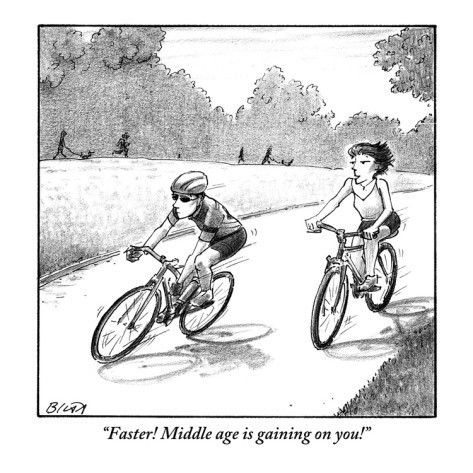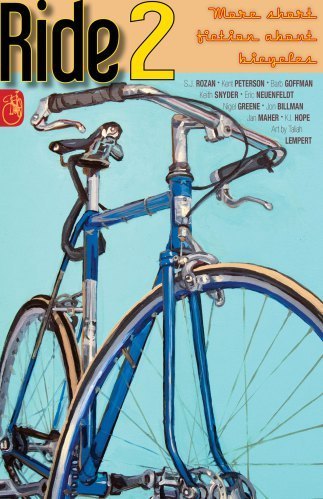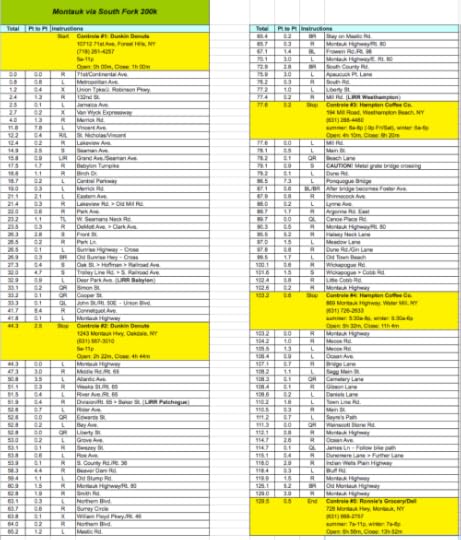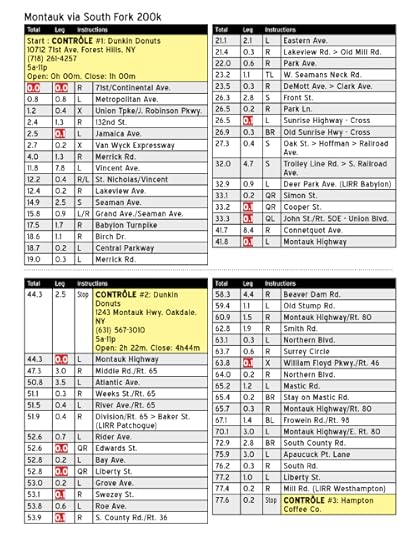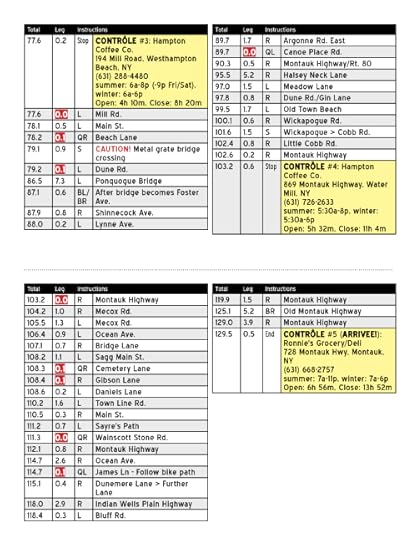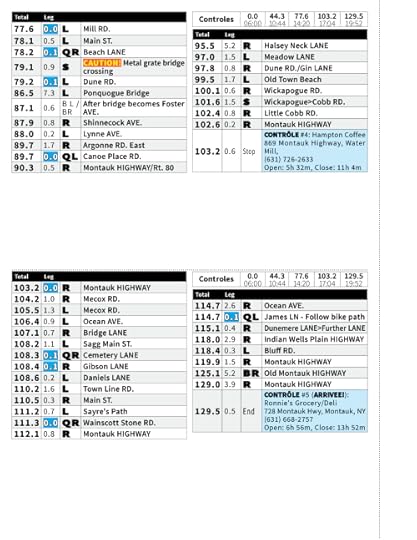Keith Snyder's Blog, page 6
June 27, 2013
The yellow bike is sold
“This is my yellow bike,” he said, in a tone I didn’t notice at the time. I didn’t notice his face, either. I was walking ahead, holding the camera facing back at the end of a casual arm. It was the day I gave him the bike. He was four. Nothing in his entire life had ever been remotely like this day. He didn’t know it was a universe where a boy could have his own bike.
I heard the tone and saw the face that night, offloading the pictures and video onto my computer. I could have missed them. I didn’t watch everything as it transferred. Instead, I learned my heart had another little door in it that could open. I learned also that his was so full that a bike could brim it over.
His fraternal twin brother liked to clean his blue bike. Liked the inclinometer I installed on it. Still wants a computer. The boy with the yellow bike just liked riding it. The day the training wheels came off, I saw him do my running dismount. Until they did, he liked to sit on the stopped bike like a cowboy on a fence during a work break and eat a sandwich. He kept growing. I got a longer seatpost for it instead of a bigger bike. He got heavier and learned how to skid. There’s about 20′ of black rubber on a sidewalk on Seaman Ave. His personal best.
Today I asked him how he felt that somebody was coming to buy it. He said he felt good, because another family would be happy because of that bike. He has a 20″ red one now.
I watched it carried to the elevator as I closed the door. The back tire is new. I didn’t tell the dad that’s because of all the skids. Let his kid write some new stories with it.
Bye, yellow bike.

Filed under: Bicycling, Bikes, Family, Fatherhood, Favorite, Inwood, Kids, Parenting


June 20, 2013
Two bikes for sale
I’m happy to sell the white one, the first I’ve put together so I could understand bikes better. (It’s been thoroughly checked out by the bike shop.) Selling it to make room for the next assembly.
[image error]
Craigslist ad:
http://newyork.craigslist.org/mnh/bik/3878494172.html
I’m sad to sell the little yellow one, which taught me how deep a four-year-old’s pride of ownership could be. He rode it until he was seven.
[image error]
Craigslist ad:
http://newyork.craigslist.org/mnh/bik/3883386066.html
Both prices firm. I’m no good at haggling, so I don’t.
Filed under: Bicycling, BikeNYC, Bikes


April 22, 2013
Book landing page
A quick post this time, just to point out the new link on the upper right of this blog that looks like this:
I’ve been intending to put up a single page for all my books since the second one came out. Which was in 1998. So I’VE BEEN BUSY, and okay, that’s all.
Filed under: Anthologies, Books, My writing, Self-promotion


April 6, 2013
Why
THE TWEET WAS aimed at another writer/cyclist and me:
It was sent by a third writer (and former cyclist), and was meant affectionately. And it didn’t bother me—but what did bother me is that I’ve never been able to put my finger on why. Why? Why brevets? Why distance? It’s been two years since my SR series (a 200K, 300K, 400K, and 600K in one calendar year), but why was that so meaningful—and why is it still?
Because you think you can outrace death. No, that’s not it. That’s dumb. That’s a line I heard on HOUSE.
On a bike podcast recently, Grant Peterson was discussing the appeal of gritty, Rapha-advertising-type “epic rides” to middle-aged men, and he hypothesized that it had something to do with regaining a feeling of athleticism lost since youth.
I had no athleticism in youth.
By my standards, I still have none. I’m not trim at this moment, I’m not ripped. I’m of decent build for a man who designs books, tall, with better-than-okay legs and butt, but essentially usual above the belt. I’m not someone you look at covertly because of how beautiful I am. At this writing, I weigh 210. I should weigh 195. That means I should weigh 190. And while I do technically have abs, they do nothing besides facilitate the movement of my torso between pelvis and ribcage, and are entirely subcutaneous.
When I said recently, to a 1200K veteran I was about to ride a 200K with, that a 200K isn’t that impressive, he corrected me, pointing out that “Most of the population thinks we’re crazy for what we do.”
This is true. But, I said, “That’s because they don’t know a 200K is mostly just about being smart, and managing your nutrition and hydration.”
I could also have said, “And because there’s really no reason anyone should do this stuff in the first place.”

ALL THIS TIME randonneuring—my first brevet was April 11, 2009—I haven’t understood why. During that time, I’ve also heard, “A bike racer is chasing something. An endurance athlete is running away from something.”
I tried that one on. It was cut wrong too.
Tonight I was thinking about Grant Peterson’s take on it, his theory about regained power, when I understood:
I haven’t regained my power. I’ve found it.
It’s going to leave me when I die. It’s going to diminish as middle age tightens its chokehold, or evaporate with my next MS exacerbation. But I found it.
It’s mine.
NOT ALL OF it—no one gets to find all of their power. It’s all potential. We were all children, and children have nothing but. And then large chunks of what the world doesn’t ruin, we ruin ourselves. I’m blogging right now instead of writing a page. I’m on Twitter instead of knocking out my paying work faster and using the resulting 20 minutes to create another few notes of music. The short films stopped when the recession hit, the Wall Street investors for the feature vanished, and I had infant twins and debt and was tired. (God, was I tired.) There may be half an inch of scotch later, for bliss and anesthetic.
So—partly I do it. Partly the world does it. Nobody gets to transform potential into kinetic without loss, and sometimes the cost is greater than the result, or the result is not viable, or the work that doesn’t even get you to where you can do more work is just too, too, too effing hard.
So it slips away. The power, the potential, all of it as liquid as time.
This one’s mine, this riding a bike far and getting there by a certain time, and doing the hill that gets you to the next hill that gets you to the next hill. In some ways it’s an easier power to capture than those others, and real hills are less abusive than allegorical ones; in some ways it’s harder. It’s certainly simpler. But I am this, now, and when I reach in to see what I am, my knuckles hit something solid.

RANDONNEUR IS A lifetime title. You do it once, finish a single 200K, and you can keep calling yourself that for as long as your self-respect lets you. Novelist is like that, too. You did it. They didn’t.
No point running from death. When that window closes, it’s all a matter of how you filled the frame.

Filed under: Bicycling, Bikes, Randonneuring, Senseless Acts, Senseless acts of beauty


January 16, 2013
My bicycle confession

I’D ALSO LIKE to apologize to the two I scared intentionally. One was on the bike path in Venice, California about fifteen years ago. You were walking next to your girlfriend and I thought you were aggressively taking up the entire lane, plus part of the opposing lane, so I blew past you close enough to lightly clip the edge of your arm with mine. I take full responsibility.
The other was on the West Side Greenway in New York City, about four years ago. You meandered straight across the path from the street without even glancing to look at oncoming traffic. I zipped by close enough that you probably felt some wind, and I heard you shriek behind me. My thought was to keep you from doing that again, because the greenway is chockablock with people on bikes who aren’t skilled or alert enough to save you from your lunkishness, and I don’t want you hurt.
I concede that I was also annoyed with you.

I CONFESS THAT Monday evenings have become my favorite time of the week, because first I walk from SoHo to Chinatown for banh mi and Vietnamese coffee, which I think is just iced Cafe du Monde with condensed milk, and then I walk back to SoHo for a bike repair class. Walking through Chinatown at night made me feel like I was in Blade Runner even before I had children and stopped remembering what being out in the city after 8PM feels like. This is as close to giddiness as I get.

I ADMIT WITHOUT the basic human decency of guilt that I have spent money on bike tools and a repair stand, including both sizes of Park Tool torque wrench, two tubs of Phil Wood Hand Cleaner, and a honking 32-oz jug of ProLink chain lube. It grieves me that I feel no regret for this, and if paroled, will do it again. Further, I admit to a glow of satisfaction upon taking a bike off the stand in better shape than when I put it up there, and to liking the image of myself with a spoke wrench and a beer.

IT IS TRUE that I only noticed the wide-open quick-releases on both brakes when I was descending Henshaw St. at considerable speed, and I aver that I may not have effected as decisive a Flintstone stop if my children hadn’t been watching from the bottom. I additionally stipulate that I have stood on a bank of the St. Lawrence River in the sub-freezing dark, straddling the frame of a hybrid bicycle, eating the best apple of my life, and that the bridges upon which you hop little islands back into Montréal, to catch your train home, are sometimes locked when you didn’t expect it.

I CONFESS THAT I do not know why even though my boys have identical bikes, one keeps dropping its chain.

I VERY MUCH regret that my actions have caused smudges on the walls in the bike area; that I have betrayed the goodwill of rugs that trusted me; that I will, at some point, kick a snapping dog; and that I hope it’s a solid kick.

I SWEAR THAT I have never felt as exhilarated as on two downhills, both mountain descents, both firsts. Exhilaration one: on a practice brevet before my first 200K, a single downhill spanning a longer distance than could fit into the boxy little dresser drawer of Manhattan. Exhilaration two: 49mph on what I’d find out, a year or two later, is the same road the boys and I now take to our second-favorite campsite in the summer.

I SHAMEFULLY CONFIRM an excited “Boys! C’mere! C’mere!” when I saw a Calfee leaning against the wall at Darling Coffee, but plead nolo contendre to the charge that I have received a cheap frame and build kit for my first home bike assembly. I furthermore refuse to respond to any and all questions regarding dining room and repair stand, relative sizes of.

I ADMIT TO thinking poorly of:
Pathetic slugs slower than me
Arrogant showoffs faster than me

BUT ALSO TO thinking well of:
Kids faking out traffic and practicing BMX tricks under the GW overpass
Carcinomic septuagenarian, shirtless on ten-speed
Pasty pudgy guy, hybrid, motorcycle helmet
Wiry older woman who knew good hills in Edgewater
Ethiopian lady on mountain bike in Van Cortlandt Park
Local kids with tall bikes
Danny McAskill
These women
Guy who tossed me an inner tube when, for some reason, I didn’t have one, halfway back from Bear Mountain
Guy with a mullet I followed uptown when I couldn’t see the road because of my messed-up glasses and a bad storm, but could see his blinky

I CONFESS THAT I saw the diagonal expansion joint coming before my kid got to it on his 20″, and didn’t yell anything because I thought startling him would be worse than letting his natural reflexes handle it. I was wrong. That was one bad 15mph wipeout and neck-twisting crash into metal railing. For this, Daddy is truly sorry.
Daddy also thinks not wearing a helmet in urban environments is generally not the brightest choice, having seen where aforementioned child’s head went, and admits both to knowing who that statement will annoy and to thinking their logic is mostly confirmation bias; and moreover regrets both his lack of interest in fighting about it in the comments and the likelihood that he will anyway.

I ADMIT TO resolving the dilemma of where to look when an attractive woman zooms by on a nice bike by staring, as though riveted, at absolutely no particular component of the bike whatsoever, with great interest, until the crisis has passed.

I CONFIRM THAT I once hung by one arm from the base of a metal post near the very top of the hill above the Little Red Lighthouse, with my bike downhill from my prone body, gripped in my other fist, because I tried to ride up when the path was iced over, and I am honor-bound to tell two additional truths: I saw the neck of the guy in the little kiosk at the bottom swivel 180° as he stared after me on my way up the first rise, and I will probably do it again.

I HAVE CLIMBED and descended mountains, hit potholes, and lost traction on the metal lips of driveways in downpours. I have pretended to knowledge I did not have, offered advice that turned out to be wrong, and given just the perfect fact at the perfect time. I have ridden the beaches of two coasts and glided alongside pelicans.

THE CONSEQUENCES OF my actions have brought enhanced harmony to my family; increased productivity and tolerance of bureaucracy to my employers; and exhilaration, reduced heart rate, and damn shapely calves to myself; and I cannot, in good conscience, swear that, given the chance, I would not repeat any and all of them until my final moments on Earth, except for the one with my kid wiping out.

AND THAT I love the smell of Proofide, and finally taking off night gear at dawn on a rural road between misty pastures, and that I will always cherish towing my two-year-olds to preschool, riding with my six-year-olds to school, and cheering crazily for my seven-year-olds when they finished 16-mile rides or climbed like champions. FURTHER, DEPONENT SAYETH NOT.
Filed under: Bicycling, Bikes, Senseless Acts 

January 12, 2013
Three questions
Cross-posted at the RIDE blog.

IT DIDN’T OCCUR to me, when I decided to use this “Three Questions” game to say what I liked about each story, or why I’d chosen it, that I would eventually come to my own. Instead of telling you how great it is, I’ll tell you something I learned.
The first RIDE anthology (mumble mumble purchase mumble) was my first stab at being an editor and publisher. One of my mistakes was in sending Advance Reading Copies to reviewers when everything was almost perfect—except for my own story, a novelette called “Night Ride.” The cover did say UNCORRECTED PROOFS, after all, which people would know meant there was still some hammering and sawing going on, and I was thinking of the book as a team effort, which implied there was a team for me to take one for. People were trusting me, and if tasks had to fall undone before the ARCs had to go, it was only fair if most of them fell into the bucket with my own name on it. So I sent the ARCs out.
And then I minded.
Not as much, though, as I’d have minded being that guy who sends a string of “Wait, I uploaded a new version!” emails.. So I stuck Don’t ship the ARC before your story is as polished as all the other ones in the “lessons learned for next time” column, along with Don’t publish the ebook and the print book at different times and Don’t miss the holiday sales window.
Those last two…well, RIDE 3, I’ll do better. But “The Rambler, Part 1″ was nice and shiny before the first review copies of RIDE 2 went out. And—yeah, it’s a poem. It rhymes. I was reading Chaucer in the tub on my iPad, and I saw that he was heavy on the plot and light on the closely observed moment, and I went I can do that! I can not observe stuff!
…up through Harlem, onto Broadway; picking
out his silhouette, they weave to follow,
sticking tight past Jimmy Jazz, Apollo,
Duane Reade, Rite Aid, Popeye’s Chicken,
toward the river, tires quicken
toward the bridge that goes to Jersey.
If he’s caught—there’ll be no mercy.

Barb Goffman (“Ulterior Motives”)
asks three questions of
Keith Snyder (“The Rambler, Part 1″)
Barb: In “The Rambler, Part I,” your rider is using his bike as a means of escape, literally. Have you ever raced away from someone on a bike, trying to avoid them?
Keith: I like to do these things called brevets, which are long-distance rides with proscribed routes and time limits. I’m also the CEO and OGH (Only Guy Here) of a book design company that grew from a fledgling business that sucked up all my time in 2011 to a big workload that sucked up all my time in 2012. So my last ride that went all night was in 2010.
Whaddayagonnado—I been busy.
But in 2010, I was severely underemployed and emotionally shredded, so I was riding longer distances. One was a 400K that went through the Pine Barrens at night.
The overnight portion of a brevet can be physically and emotionally difficult; you’re fatigued, it may have been a while since your last real food, you’ve had several imaginary but not entirely silent confrontations with the most obtuse people of your acquaintance, and your metabolic thermostat has sprung its coil. You can’t remember why you thought this was a good idea, your car is fifty miles away, and there’s no train and zero bars on your phone.
Brevet routes tend to be designed to put you on smaller highways and mountain roads as much as possible, both to reduce the number of cars you’ll encounter and because stoplights bleed your average speed more than you’d think. (Well, stopping at them does, anyway.) So depending on route, season, weather, and velocity—I’m slow—you can end up in unlit desolation for long stretches of time, able to see only as far as your headlight beam, utterly blind to the sides and rear. 4am isn’t just the best time for an army to attack, because the other army is at its worst; it’s also when a dirty, discouraged randonneur (or frozen, or drenched; we do this in all weather) can’t see the point of this anymore.
The Pine Barrens are a forest shot through with cranberry bogs. There are no streetlights because there is almost no night traffic, and there are no stars except those directly overhead, because the pine trees snuff them out in all directions. On this night there was no moon, either, and an overcoat of clouds over whatever stars had escaped the pine trees. I could see the highway in front of me well enough to think every stretching shadow was a pothole, but the portion of beam higher than the road didn’t do anything but collude with every reflective highway sign to blow out my vision and hint at an ever-moving wedge of distant black foliage.
But you can hear things in the cranberry bogs.
I don’t know species, so I classify them all by size. That soft crackling and crunching, very soft, everywhere, is the the local insect biomass stumbling over thousands of tiny twigs, falling off leaves, dropping into ponds. Briefer, more directional little snaps and dull creaks are your beefier bugs and possible birds. Next larger: definite birds—woodpeckers, the occasional confused rooster—and continuing up the size scale are your random small mammals, trotting coyote, bored, leaping deer, the isolated shapeless thing skulking across the highway.
And to my left, the deep, leathery flap of something huge in the air, rising off a dirty water surface. There’s a creek, or a bog, or a flooded ditch off the highway there, because the rising thing’s feet drag on liquid as its wings beat. Its gains altitude ponderously, amassing momentum, its hot weight coming even with me, then rising above eye level—and my panic has flooded me with so much strength, I can barely get my fumbling fingers on the shifters.
Once identifiable as little rocks, gravel has become dim streaks beneath my pedals. I’m maintaining barely enough self-mastery to not flub a shift and grind my non-precision budget drivetrain. Hair surges on my neck and forearms—the luxurious wingbeat is closer, the dense black body gliding in the humid black air; my butt’s bouncing because I just outran my gearing. The highway floats ahead in a few dozen feet of bulbous gray light. A few inches behind my saddle, the floating glow of a deep red coal—the brightest taillight on the Internet—is beacon and rangefinder for anything that wants to strip my nerves from my meat.
There’s a deep bovine growl three feet from my ear, a hot snort on my cheek. I’ve just whimpered and my legs are spinning faster than the gears can accept, and I don’t know what gear I’m in, so I shove a shift lever in my blind panic, and there’s a cling! and a thrrrrrip!; my pedaling legs flail against nothing, and I understand that the chain has come off.
A single blast of warm air into my face and through my helmet vents, and thick leather wings and a whip tail clip the topmost antumbra of my headlight, as I grab my handlebars and fight to keep from crashing; I stutter-step with one foot a few times because I can’t remember how to unclip the other one and I stand alone shaking, the flashbulb impression of a massive bat ray still fading in my retinas, and up in the depth of night, something smashes the tops of the invisible pines.
Barb: Is there anywhere in the world you would like to explore on a bicycle but haven’t been able to? If so, where and why? And what’s holding you back?
Keith: There aren’t that many places I wouldn’t like to. In some alternate universe, I have no family and one of these. In that same universe, its bushings never fail, and my witty, self-deprecating accounts of adventures through a smorgasbord of terrains and cultures are the most fascinating things that happen near the onion dip at parties of A-list literati; but this never happens. So let’s just keep things as they are.
Barb: What’s your most embarrassing or funny biking story?
Keith: FCO (Failure to Clip Out) in front of Princess Grace of Monaco. She pretended not to see, but we both knew.

LIKE YOU’VE NEVER read Chaucer in the tub on your iPad.
[image error]
Filed under: Anthologies, Arts, Bicycling, Books, Favorite, My writing, Other people's writing, Poetry, Randonneuring, Self-promotion, Senseless Acts, Short stories


December 1, 2012
The Next Big Thing: RIDE 2
(Cross-posted at the RIDE blog.)
Barb Goffman—whose story “Ulterior Motives,” appears in RIDE 2—tagged me in the Next Big Thing blog chain, which is authors answering ten specific questions about their books. I said SURE! and set a calendar alarm to write my blog entry, because I am responsible like that. (Also because with twins and jobs and RIDE and stuff, if it doesn’t have an iCal alarm, it doesn’t exist.)
So today the alarm went off, and I wrote about RIDE 2, which will be out in a week if people will just stop paying me to design other books for a few hours.
THE NEXT BIG THING: RIDE 2
Where did the idea come from for the book?
I wanted to read a book of short stories about bicycles, but there wasn’t one. So I posted a call for submissions on my blog, and at the end of 2011, I published RIDE. I design books and produce ebooks for a living, so except for making time for all the work, I didn’t need to worry about that part of it.
It didn’t sell a zillion copies, but people in bicycling were enthusiastic about it, and I wanted to read another one, so I posted another call for submissions at my blog…
What genre does your book fall under?
From the beginning, I wanted a mix of genres. I mostly listen to music in shuffle mode; I like the chance juxtapositions and weird contrasts. Nine Inch Nails followed by Floyd Cramer? Nice. Floyd opens for Congotronics? And then Youssou N’Dour sings something Egyptian, followed by a cut from the new Ethel album, a cue from Ry Cooder’s Crossroads soundtrack, and a Danny Kaye and Jimmy Durante novelty number? Lovely. Jarring. Pleasurable.
Some of my favorite moments are when I can’t tell whether some cool piece of sound is a study in tone that’s going to slowly mutate for a while, or the introduction to something in pop form, so the drums are about to start whacking away in 4/4. Not knowing forces me to withhold judgment, and to take each moment of the piece in on its own terms, not the terms of the genre I’ve been told to judge it by, or previous things I’ve heard the same artist do.
RIDE 2 has crime; it has non-crime written by a crime author; it has poetry masquerading as prose; it has story disguised as poetry; it has visions, crashes, love, death, and gloating. Each story is what it is, and I don’t care if a reader thinks it’s one thing and then finds out it’s another. I don’t have an anti-genre stance, but I also think it’s nice not to know what’s coming all the time, and a collection of short stories is a perfect place for that.
That said, I’d love to see a Western for RIDE 3. Or science fiction. Or something based around feminism and the Arab Spring, or…I dunno, you tell me. I’m just the editor.
Which actors would you choose to play your characters in a movie rendition?
My piece is an epic poem about an eternal cyclist chased by monsters, so it would have to be somebody who does tough, lean, dirty, and scared pretty well. Who’s that? I have no idea. I didn’t pay attention to movie stars when I was in my twenties; I definitely don’t know who’s who now.
What is the one-sentence synopsis of your book?
The second collection of short fiction about bicycles.
Will your book be self-published or represented by an agency?
I’m the publisher of RIDE 2. I guess that means my own story in it is self-published, but no one else’s is. (And this isn’t a collection of free stories by pals; I solicit, I edit, I publish, I pay.)
How long did it take you to write the first draft of your manuscript?
Cumulative time between all authors, all stories? Oh, boy, I don’t know. 0.003 epochs?
What other books would you compare this story to within your genre?
As near as I can tell, as far as bike fiction, we’re it. We are the genre.
Who or what inspired you to write this book?
Impatience, probably.
What else about your book might pique the reader’s interest?
If I didn’t really like everything about RIDE 2, I wouldn’t be publishing it, with my name on it as editor. That’s what piques my interest: All the great stuff. Crime fiction or bike people who want names they recognize might be drawn in by SJ Rozan, Barb Goffman, or Kent Peterson. People who hate poetry will be interested in the stories. People who hate bicycles or short stories won’t be piqued—or anyway, their interests won’t be—and should buy something else from Amazon instead. Canned pears, maybe. Bamboo manicure sticks. Don’t buy RIDE 2; you won’t like it.
In fact, here’s the whole lineup:
Escape Velocity—S.J. Rozan�
Made with Extra Love—Kent Peterson�
Polo—Eric Neuenfeldt�
Ulterior Motives—Barb Goffman�
The Rambler, Part 1—Keith Snyder�
I’ve Begun to See Things—Jan Maher�
Dert—Jon Billman�
The Persistence of Memory—Jan Maher�
Beat the Devil Home—K.I. Hope�
Passing Thoughts—Nigel Greene�
RIDE 2 will be available in ebook and print, just in time for holiday ordering (edit: well, the ebooks are; print will be in January). Subscribe to the RIDE blog or follow @ridebikefiction on Twitter if you want to know when it happens.
So as I mentioned, the alarm went off for me to write this, which was this morning, and I’d already been thinking about what to write, so it was going to be pretty quick–but then when I pulled up the questions–
I’d somehow blown right past the part where I needed to have found more authors to tag already.
Luckily, when I said UH OH and went googling to see how other people had fared, in case maybe I wasn’t the only one who’d messed that part up, the first two intros I read were about how they hadn’t realized they needed to tag people.
And even more luckily, after it turned out most of my mystery friends had either already done it, or had just emailed me to find out if I was interested in being one of their five tagged authors, I realized that this coming to me through Women of Mystery was appropriate: I had not just a woman of mystery I could pull into the vortex, but a woman of Mystery. After all, who knows more about Mystery than clergy?
So next Friday will be MaryAnn McKibben Dana, who blogs about…well, kind of everything at The Blue Room Blog, and recently told Presbyterians they’re pregnant, answering these questions about her new book SABBATH IN THE SUBURBS. Which I have a cameo in. I play a funny secular Jew at a playground. I’m great. You should buy it.
Filed under: Bicycling, Bikes, Senseless Acts, Short stories


October 17, 2012
Reformatting a brevet cue sheet—a work in progress
THIS IS A work in progress that I only started because I wanted it, but if you’re a randonneur who wants to use it (or a randonneur who thinks something should be different, or an InDesign person who knows a trick I missed, or an Excel person who could let people do this easily without leaving Excel), please comment!
My bike readers already know this, but if
you’re here from my InDesign or ebook lives:
A brevet is a long-distance self-supported bike ride,
with time limits, and for some unknown reason,
I do them (which makes me a randonneur).

And if you’re here from my bike life:
I’m also an InDesign expert, with a background in
layout and automation of magazines and directories.
I’LL SOMETIMES REFORMAT a cue sheet when it’s provided in Excel. A cue sheet generally looks something like this:
The route designer added some nice touches you don’t usually see: Yellow backgrounds for the controles (checkpoints), and a two-column design for single-page printout.
The only problem was, in order to print it on one page, the font size was too small for me. Not too small for normal reading environments—say, seated on a bed, in an air-conditioned room, under an overhead light—but certainly when pedaling a bike while mentally and physically fatigued, at the limits of my physical ability, at mile 100, on unevenly paved streets and highways, in all weather conditions, at all times of day and night. On a ride, I want to be able to glance, read, and go, without taking my eyes off the road for too long, and with minimal searching around for the cue I need next. (I want to try one of those little pointer clip things that lawyers use to show you where to sign legal papers, and see if that works, sliding it from each cue to the next to keep track of where I am, but I haven’t gotten around to it.)

ANYWAY, THE ORIGINAL cue sheet for this ride was more usable than most: Usually you’ll just get a plain-vanilla Excel spreadsheet with everything in one font, no colors or background fills. And there’s something to be said for that: If you get used to it, you’re prepared every time you encounter one.
But the font was still too small for me, and I didn’t like how the page breaks fell when I made it bigger in Excel, so I brought it into InDesign and started thinking about what I’d really like from my dream cue sheet:
Don’t make me stop and flip pages when I’m most of the way to a controle
Don’t make me guess how far I have to go to the next controle because it doesn’t appear on the side of the paper I’m looking at
Help me not miss turns that happen immediately after other turns
Help me not miss CAUTION and DANGER notes (usually these have to do with railroad tracks, very bad potholing, extremely steep descents, or all three at the same time)
Help me read more easily when I’m on bouncy road in a downpour at night and can’t afford to stop and study the sheet (these rides have time limits)
To me, that sounds like:
Controles should only fall at the ends of pages (and having them mentioned again at the top of the next page would be a plus)
Small distances—say, 0.0 or 0.1 miles—and distance-related warnings should be highlighted, but probably only when they fall at the beginning of a paragraph (or table cell)
Cautions should be highlighted, regardless of where they fall, and should look different from highlighted distances
Table rows should use alternating fills to help eye tracking when the eye and the table are both jouncing around
Font face, horizontal and vertical text spacing, and font size should help readability—without egregiously increasing the number of page turns. Page turns are lost time, since I have to pull over to do them. If I can limit page turns to moments when I’m off the bike already anyway (which would be at controles), form doesn’t interfere with function.
And while I’m at it:
Have all the magic happen behind the scenes in the paragraph styles, and keep it to basically just one paragraph style, so if anybody else wants to use this for their cue sheets, they’re not overwhelmed with a long list in the STYLES panel.

HERE’S THAT EXCEL file, brought into InDesign and reformatted:
The dotted line across the middle is where to fold it so it’ll fit in my map case. That’s also why the mileage goes left/right columns on the top, and then left/right columns on the bottom.
Your map case may vary.

INDESIGN HAS A feature called GREP styling that will automatically apply the various highlightings to whatever text you tell it to:
In GREP (which is a flavor of RegEx), the dot character (.) means “any character,” and the pipe character (|) means “or.” Because people spell “control” differently (control, controle, contrôle), contr.l. should catch all possibilities. (?i) tells it to ignore case. (GREP is case-sensitive.)

AT THIS POINT, the controles require a little manual adjustment so they’ll fall at the top of a page. InDesign does have a feature that forces certain kinds of type to skip to the beginning of the next page (or column), but it doesn’t apply to text inside a table

I’M THINKING THE font should be a sans-serif designed for highway signage—like Clearview, which all federal highway signs are being changed to. It was designed for legibility of short strings of text at a distance in bad conditions. However, it costs $800, so I found something free called “Blue Highways.” I’m not in love with it, but that’s just aesthetic; I haven’t tried it on a brevet. (And my thought of highway signage may or may not be a good one. It seems to make sense, but does it? Not sure.)

October 21: Second pass
The controles are now blue so the yellow doesn’t detract from the red/yellow CAUTION/DANGER/WARNING style. Quick-turn emphasis (bold type reversed out of background) is now black instead of red for the same reason. Some other changes too, following various personal theories, but I won’t know if they make sense in practice until I use this cue sheet on an actual ride.
Two questions for GREP and InDesign people:
Streets, avenues, etc. are now capitalized and bolded with GREP, but how do I prevent Old Stump from becoming Old STump? (Lower right quadrant, first page). (SOLVED! Thanks, James and Tina.)
See the list of controle mileages at the top right of the page? That’s a master page item. The numbers were typed manually. Is there a way in CS5.5 to make a text variable that automatically grabs them from the table? Do CS6 features let you do that?

Second pass, page 1

Second pass, page 1

The GREP strings in the paragraph style
October 24: Third pass
This is the version I’ll probably test this weekend. (I’m doing this ride on Sunday.)
Patrick, whose route I’m using as a guinea pig, said he likes to highlight every left turn when he gets a cue sheet, to make it easier to find where you are in the cue sheet because you generally remember your last one.
I kept the street-type highlighting, but toned it down to all-caps and removed the bold, and gained a little vertical space by removing the ride name from the top. I figure if you don’t already know what ride you’re on, none of this is going to help you anyway.
I’m also trying to keep in mind that inkjet printing in a rainstorm is no good for your finish time, so all the colors have to be BW/laser-friendly.

Third pass, page 1 (which is really two pages, since it’s designed to fold into a half-letter horizontal to fit my map case).

Third pass, page 2
November 1: Fourth pass
I used it on the Queens-to-Montauk 200K last weekend, a day before the hurricane hit.
Turn direction and total mileage are much more critical than leg mileage, which the eye shouldn’t track to at all.
The knockout type on blue for quick turns needs a black stroke for legibility.
The little handy-reference controle list at upper right needs times, not just mileages.
In order of importance:
Find the last cue you already did
Read the street name and brief info on the next upcoming cue
Read its turn direction
Read its total mileage
I also increased tracking to help with letterform recognition in vibrating conditions.
…and compressed it horizontally to fit my map case, with a dotted line for cutting or folding
Nothing’s ever “final,” but I think this is pretty good.

Another pass after using that last version on an actual 200K
Filed under: Bicycling, InDesign, Randonneuring, RegEx and GREP


October 2, 2012
A Saturday 200K Brevet — Part 3½
Part 3½
(half-installment—more to come)
Part 1 is here.
Part 2 is here.
Part 3 is here.
ANOTHER WORD WE use is randonnée.
It’s basically the same thing as “brevet,”
a self-supported ride over long distance,
which means we can’t get personal assistance
except at checkpoints, which we call controles.
In France, they use the circumflex: contrôles.
Americans delete the e: controls.
I guess in 1337 it would be spelled ,
which is a forcéd rhyme, but irregardless:
Don’t ever ride away from controles cardless
(your brevet card is what bears the initials
of volunteers, employees, or officials
who verify that you were there, and when),
or—not that I’ve done this one time or ten—
you’ll have to turn around when realizing
you didn’t get it signed: Quelle surprising!
Most often, randonnée means one refers
to a “Grand Randonnée,” the ride that lures
the toughest or the craziest, or both,
who, ravenlike, will tend, after, to quoth
a steely Nevermore, but like that bird,
are also known to overuse the word.
What’s in it for the raven? No one knows.
All that rapping tapping tapping, then it goes
repeating its one oath: Never again!
which sounds as though this really is the end—
but then it won’t shut up! So “nevermore?”
Uh huh…you know, I’ve seen this bird before,
and I’d say it’s a safe bet to ignore
whatever it declares. (If you’re Lenore,
STOP SENDING BIRDS! He misses you, okay?)
Grand Randonnées: They run 1200K.
The famous one is PBP, brevet
of lunatics, la crème de la très wack,
which runs from Paris, out to Brest, and back.
So my little 200′s a lark
(speaking of birds), a ramble in the park,
about as worthy of mostly-iambic
mostly-pentameter as the Atlantic
is full of porcupines. But stick around—
Antagonist must outmatch, pound for pound,
the hero, which means Hero can be scaled
way down to match some small test he’ll have failed
spectacularly, prior to the curtain,
unless endowed by Creator with certain
innate convenient traits as he narrates—
plus simple and complex carbohydrates.
Will that be the case here? Stay tuned and see!
When last we left me, I’d begun Leg 3:
BR @ SS & BL TL.
The stripe was somewhere up ahead—not swell,
but neither was it fatal. While I’d sat
and eaten, it had slid ahead with that
inevitable movement towards the end
that perfect stories have, seemingly penned
to lie along magnetic lines of force.
As riders move along a brevet course,
their reasons for continuing may shift.
The bodies pedal; minds will often drift
to songs and nemeses, or emptiness,
mistakes, regrets, and failures to impress,
and lovely moments, things somebody said,
family, friends, and lovers, living, dead,
and otherwise; the mind ranges much wider
than can the truest bike and strongest rider
until something recalls it—in this case
a mileage. On each course, there is a place,
a physical location, not a time,
where ridden and to ride exactly rhyme:
A half-inch farther, and the fastest way
to get home is to finish the brevet.
Now, in most cases, this won’t quite be true:
one half may have more climbing, or too few
paved roads (or too much gravel or chipseal),
which makes the midway-point conceit not real—
but when there’s nothing left to gain by quitting,
a useful fiction helps in recommitting.
And recommitting to one’s fiction’s useful.
I hadn’t meant to stop here (to be truthful,
my favorite moment starts right at this point),
but though I really hate to disappoint
you three weirdos who think bike poems are cool,
I need to PAUSE for now and hope that you’ll
forgive me, but I have to spend this time
on quite a different bike story in rhyme.
RIDE 2 needs to be out in late November
so you can buy twelve copies in December,
and that means I must put this one aside—
but only for a while. For now, I RIDE…

Filed under: Bicycling, BikeNYC, Bikes, Favorite, Poetry, Randonneuring, Senseless Acts


October 1, 2012
Announcing the authors of RIDE 2!
…which, unless I think of an even more splendiferous title, will be called

(Though that won’t be the cover design.)
I thought about breaking this list into STORIES and POEMS, but Beat the Devil Home is a poem masquerading as a story, and The Rambler is a story decked out as a poem, so I got confused.
Here they all are, sans genre labels, in the same order as they happened to come out of this manila folder with the word YES on it.
RIDE 2 will be available in Kindle, Nook, iBooks and print after Thanksgiving. Maybe before. Indie presses laugh at calendars.
(And now that I’ve had a moment to take a step back and look at it fresh—I love this book.)
The authors of
RIDE 2
SJ Rozan
Escape Velocity
K.I. Hope
Beat the Devil Home
Nigel Greene
Passing Thoughts
Jon Billman
Dert
Eric Neuenfeldt
Polo
Kent Peterson
Made with Extra Love
Jan Maher
The Persistence of Memory
I’ve Begun to See Things
Barb Goffman
Ulterior Motives
Keith Snyder
The Rambler, Part I
If you’re interested in RIDE reviews, announcements, and excerpts, follow the RIDE blog (where this post also appears) and the RIDE Twitter feed. (If you’re a bike blog or magazine and want a review copy, drop me a line on Twitter.)

Filed under: Bicycling, Bikes, Favorite, My writing, Other people's writing, Poetry, Self-promotion, Senseless Acts, Short stories



